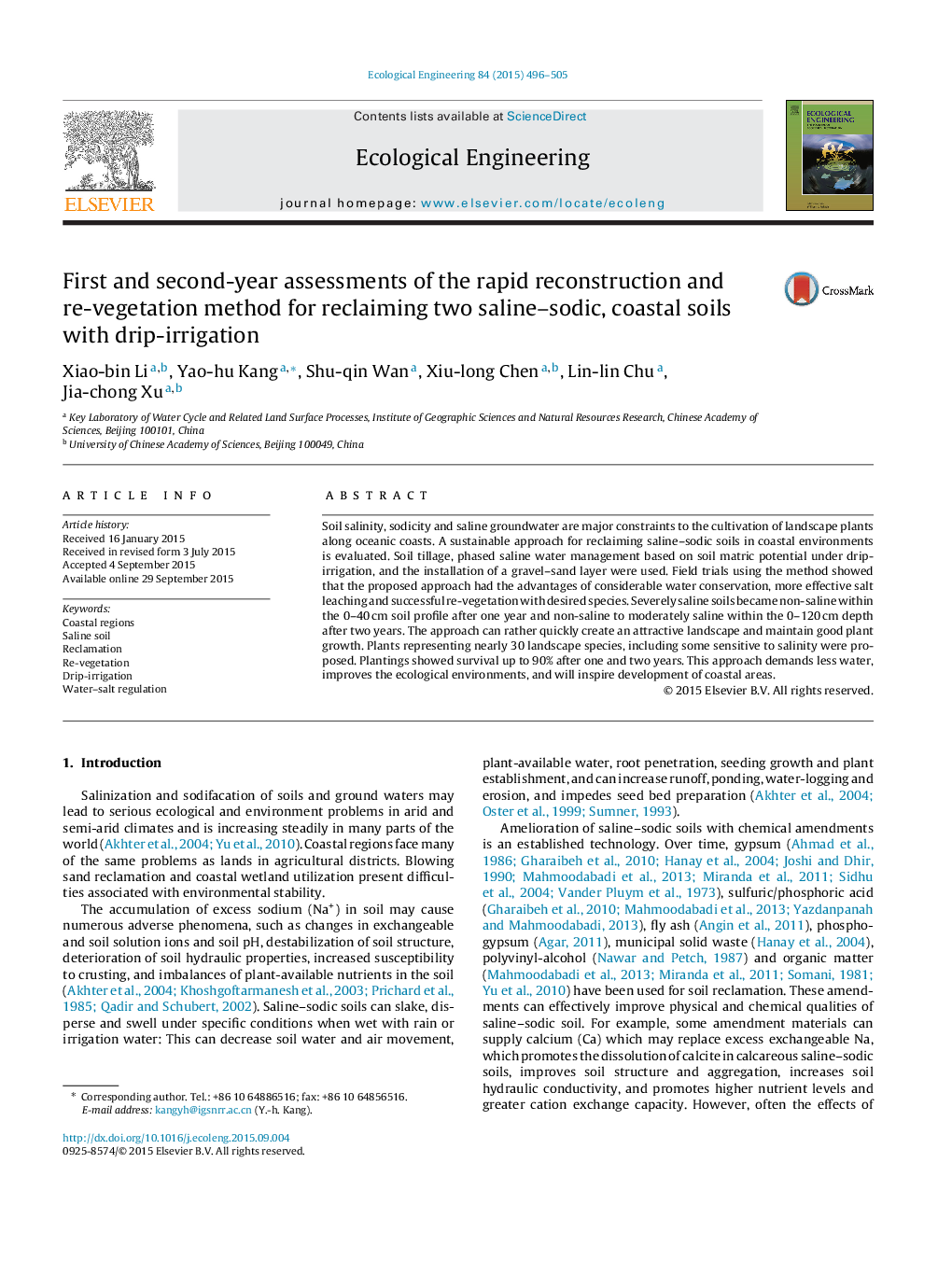| Article ID | Journal | Published Year | Pages | File Type |
|---|---|---|---|---|
| 4388819 | Ecological Engineering | 2015 | 10 Pages |
•A new approach for ecological restoration in coastal saline regions is proposed.•Soil treatment and water–salt regulation using drip-irrigation are included.•The approach had advantages of saving water and better salt leaching.•The approach can quickly create a good landscape and maintain good plant growth.
Soil salinity, sodicity and saline groundwater are major constraints to the cultivation of landscape plants along oceanic coasts. A sustainable approach for reclaiming saline–sodic soils in coastal environments is evaluated. Soil tillage, phased saline water management based on soil matric potential under drip-irrigation, and the installation of a gravel–sand layer were used. Field trials using the method showed that the proposed approach had the advantages of considerable water conservation, more effective salt leaching and successful re-vegetation with desired species. Severely saline soils became non-saline within the 0–40 cm soil profile after one year and non-saline to moderately saline within the 0–120 cm depth after two years. The approach can rather quickly create an attractive landscape and maintain good plant growth. Plants representing nearly 30 landscape species, including some sensitive to salinity were proposed. Plantings showed survival up to 90% after one and two years. This approach demands less water, improves the ecological environments, and will inspire development of coastal areas.
Graphical abstractFigure optionsDownload full-size imageDownload as PowerPoint slide
